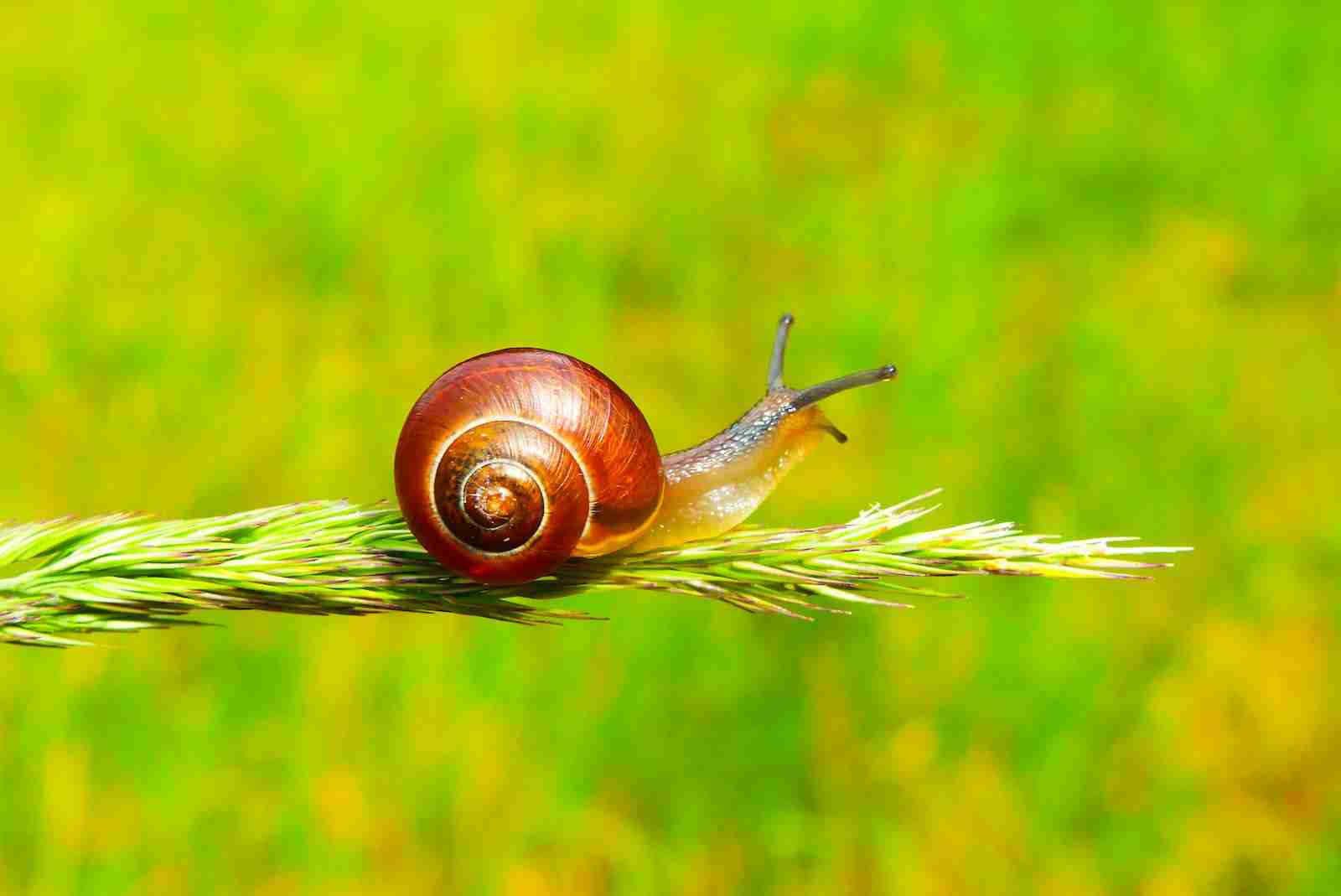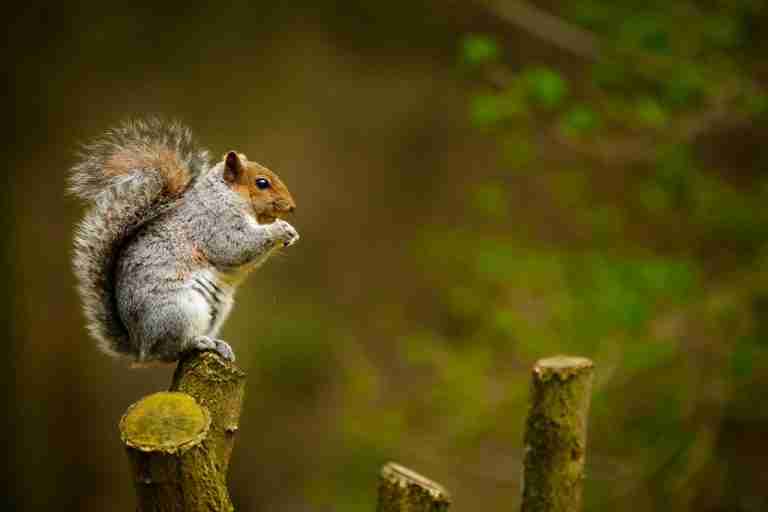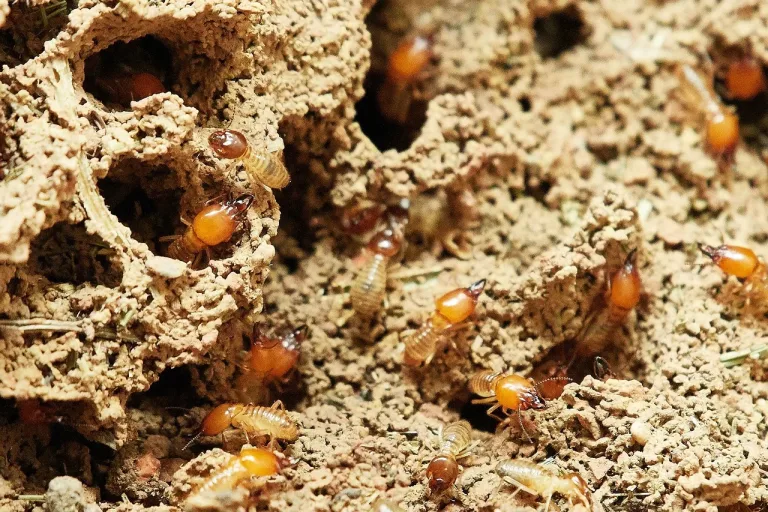24 Fun Facts About Snails | Slimy Wonders
1. There are over 40,000 different types of Snails.
Snails, fascinating creatures from the Gastropoda class, are more than just garden dwellers. With over 40,000 species, they thrive in diverse habitats like rainforests, deserts, and even oceans.
They vary greatly in size, from tiny ones smaller than an inch to large ones over 15 inches. Unlike their close relatives, the shell-less slugs, Snails are known for their distinctive shells.
2. Snails are not mammals or reptiles; they are Gastropods.
Snails, distinct from insects and amphibians, are mollusks, a large group in the animal kingdom. They fall under the Mollusca phylum and specifically, the Gastropoda class, meaning ‘stomach-foot’ in Greek.
Snails, especially land varieties, are shelled gastropods. They share the mollusk category with shellfish like oysters, clams, and mussels, with gastropods being the largest group in this category.
3. Most Snails are hermaphrodites and can reproduce on their own.
Most Snails are hermaphrodites, possessing both male and female reproductive parts. While they can self-fertilize, they usually prefer mating with another Snail.
Different species mature sexually at varying times, influenced by their environment. Some, especially freshwater snails, can reproduce asexually, making them prolific breeders.
4. Snails retreat into their shell when a threat is nearby.

Snails, lacking a backbone, rely heavily on their shells for protection. These creatures, sensitive to changes in light and shadows through special cells, quickly retreat into their shells when sensing danger.
This action is similar to how a turtle hides for safety. Their shells are not just homes but vital defense mechanisms, shielding them from predators and even extreme temperatures.
5. Snails are a delicacy in some places.
Snails are not just garden dwellers; they’re a delicacy in many cultures, especially in the Mediterranean, Africa, and Southeast Asia. Known as ‘escargot’ in French cuisine, they’re often cooked with garlic, butter, and herbs.
Snail caviar, made from their eggs, is also a gourmet treat, likened to a crunchier version of fish caviar. While cherished in many places, snails are taboo in some cultures.
6. Snail shells grow with them as they age.
As Snails grow, so do their shells. The snail’s mantle adds layers of calcium carbonate to the shell’s edge, shaping it as the snail matures. This growth is influenced by genetics and the environment.
Snails start life with a shell; unlike other shelled creatures, they never shed it. Constantly seeking calcium-rich foods, they strengthen their shells to protect their growing bodies.
7. Snails have many teeth used to scrape and cut their food.
Snails have an astonishing number of teeth, up to 25,000, for scraping and cutting their food. They eat using a radula, a band of thousands of tiny teeth, and a jaw to bite off larger pieces.
Surprisingly, the limpet, an aquatic snail, has teeth stronger than titanium! Though Snails have tiny mouths, their numerous teeth play a crucial role in their feeding process.
8. Snails can be kept as pets.
Snails can be low-maintenance and interesting pets, especially for nature-loving kids. They require a terrarium for living but don’t need much space or human interaction. Snails are quiet, don’t need walking, don’t shed, and don’t smell.
They feed on fruits and vegetables, except citrus. While they aren’t cuddly or trainable and typically live only a few years, they are an easy, inexpensive pet choice.
9. Snails were the first real cyborgs in an experiment.
In a groundbreaking experiment in Potsdam, NY, scientists turned a Snail into a cyborg by implanting a biofuel cell inside it. This cell uses the Snail’s glucose to generate electricity.
By inserting enzyme-coated electrodes between the Snail’s shell and body, researchers harnessed power from the glucose, paving the way for bioelectronic devices powered by living organisms for tasks like search-and-rescue or surveillance.
10. Snails eat a variety of things, including smaller Snails.
Snails have diverse diets based on their habitat. Land snails usually eat plants, like leaves and mushrooms, helping break down organic matter. Aquatic Snails, on the other hand, prefer algae and small aquatic organisms.
In Florida, certain native and introduced Snail species are known to be carnivorous, even eating other Snails, making them cannibals. Some also consume their unhatched eggs for nourishment.
11. Most species of Snails are deaf.
Most Snail species cannot hear, as they lack ears or an ear canal. Instead, they sense vibrations and sound waves. While they don’t have external ears like humans, they possess a sensitive organ called a statocyst, which aids in hearing.
To compensate for their limited hearing, Snails have a remarkable associative memory, helping them remember locations and objects in their environment.
12. Snail races are a form of entertainment in some places.
Snail racing, a light-hearted entertainment, often features the common garden snail, Cornu aspersum. Popular mostly in the UK, these races involve Snails starting at the center of a damp, circular track on a table and racing to the edge.
Each Snail is identified by a painted number or tag on its shell. The World Snail Racing Championships, an annual event, began in Norfolk in the 1960s.
13. Snails do not drink water but absorb it with their body.
Snails and Slugs need moisture to survive but don’t drink water in the usual sense. They absorb water directly through their skin, from sources like damp surfaces or puddles. This process, known as ‘contact rehydration,’ is vital for their hydration.
They’re often more active at night or during damp conditions. When dehydrated, they flatten against wet surfaces to soak up water, visibly extending their upper tentacles once hydrated.
14. There are underwater Snails known as Whelks.
Whelks, a type of sea Snail, belong to the family Buccinudae and are scientifically named Buccinum undatum. These underwater creatures are carnivorous, mainly eating mussels, barnacles, other mollusks, and worms.
You can often find them partially buried in the ocean floor, easily recognized by their spiral shells with pointed tips, a signature trait of whelks.
15. Snails create a mucus cushion for movement.
Snails produce a slimy mucus, crucial for their movement. This mucus, made of water, proteins, and sugars, reduces friction and protects them from injury as they glide over various surfaces, including vertical walls.
Secreted from a gland near their mouth, it leaves a shiny trail, helping Snails retain moisture. Snails move using a single muscular foot, with the mucus acting as a lubricant and protective layer.
16. The Cone Snail is deadly with venomous harpoons.
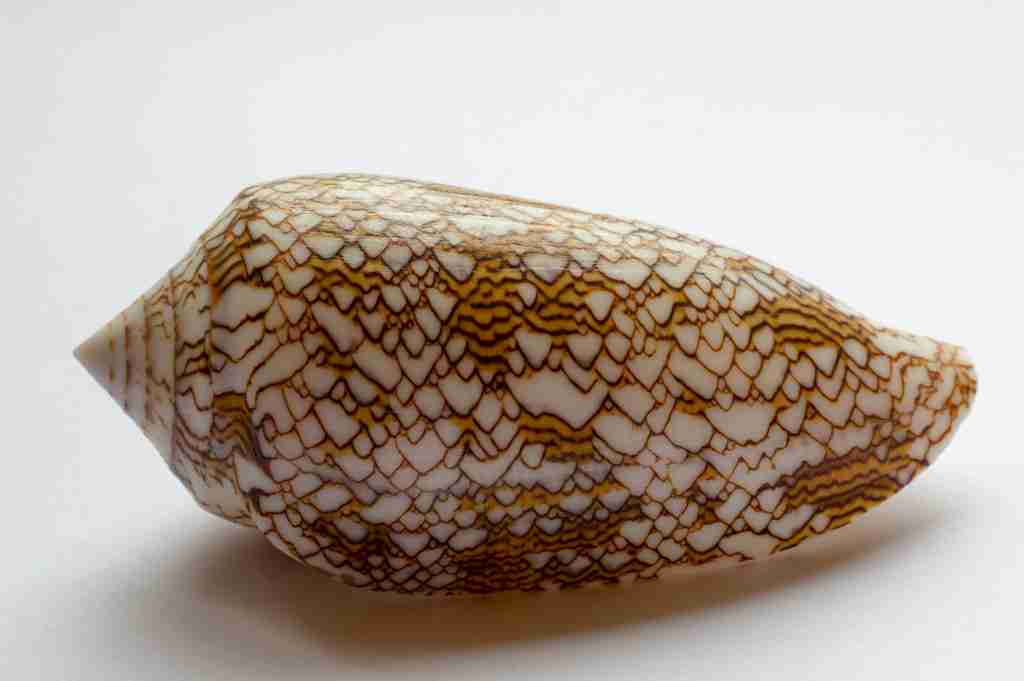
Cone Snails, residing in tropical waters, are known for their venomous harpoons used to catch fast-moving prey. These slow-moving sea snails can be dangerous, with their venom capable of killing humans.
Their colorful shells may attract divers, but their venomous harpoon can pierce skin, gloves, and wetsuits. While they usually don’t pose a direct threat to humans, caution is advised around these Snails.
17. Snails have been used in medicine for a long time.
For centuries, Snails have been valued in medicine. In the past, their mucus was used to treat ailments like anthrax and tuberculosis, and as a healing agent for skin wounds.
Recently, researchers have developed a medical adhesive inspired by Snail slime’s stickiness, useful in surgeries like heart defect repairs. This glue, currently tested on pig hearts, demonstrates Snails’ ongoing significance in medical advancements.
18. The first Snails appeared on Earth about 600 million years ago.
Snails have a long history on Earth, first appearing about 600 million years ago, predating most dinosaurs. The earliest land Snail fossils, dating from 350 to 260 million years ago, include the 8mm cylindrical Dendropupa vestusta with 9 whorls.
The oldest complete Snail fossil, discovered in Myanmar and 99 million years old, remarkably preserved the Snail’s shell, head, eye stalk, and foot in amber.
19. Snails have been depicted in art for hundreds of years.
For centuries, Snails have held symbolic significance in art. Salvador Dali used them to represent impotence, while medieval artists depicted them with the Virgin Mary, symbolizing modesty and purity due to their shell and perceived sexless reproduction.
On gravestones, Snails signify resurrection. In Dutch flower paintings, they remind us of life’s transience, as they, along with worms and insects, consume all that is beautiful.
20. Snails have a unique pair of eyes on their tentacles.
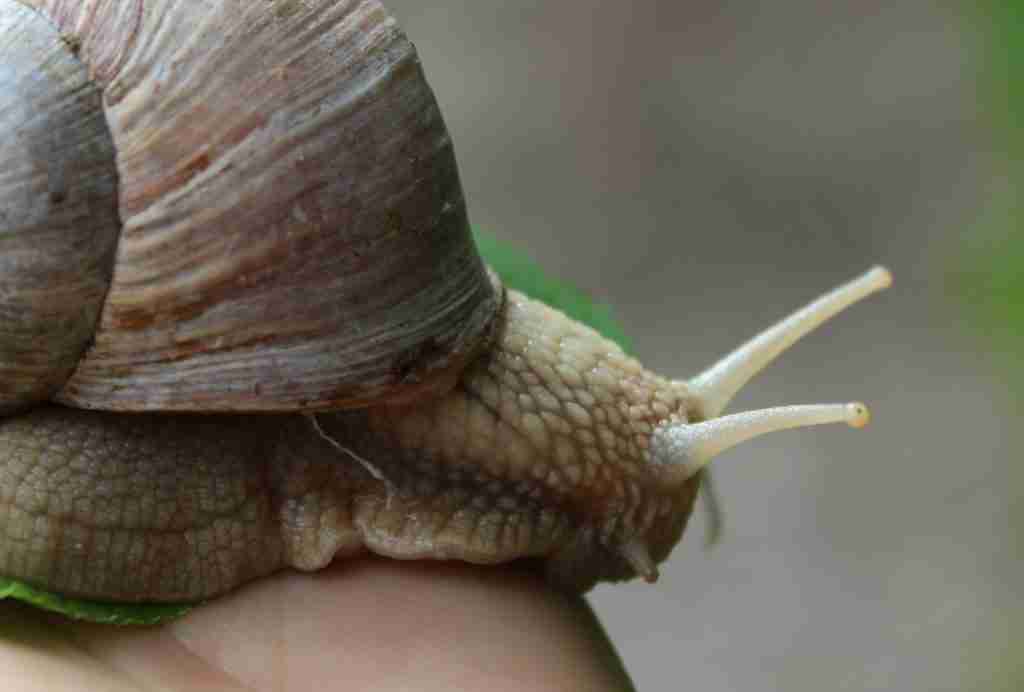
Snails have eyes on their tentacles, providing a unique way of seeing. Land snails’ eyes are at their longest tentacles’ tips, offering a wide view. Aquatic Snails’ eyes are at the base of the shell, limiting their vision.
Some species, particularly underground ones, lack eyes and use other senses. Carnivorous Snails tend to have better vision, beyond just light perception.
21. Snails contain more proteins than chicken eggs.
Snails are a nutritious food choice, offering protein levels comparable to pork and beef but with much lower fat. While they have less protein than chicken eggs, Snails are also lower in calories and cholesterol.
Rich in iron, calcium, Vitamin A, and other minerals, Snails support a healthy immune system, strong bones, and efficient oxygen transport in the body, also benefiting hair, nails, and skin.
22. There are many myths and folklore about Snails.
Snails have long been a part of human mythology and folklore. They’re often symbols of creation, laziness, or fertility, depending on the culture. North American folklore believed a Snail soaked in vinegar could cure rheumatism.
In Mayan mythology, Snails symbolized sexual desire. Various cultures have linked Snails to love, divinity, and nature, like the Aztecs who saw them as sacred, and in Japan, as water gods.
23. The Giant African Land Snail is one of the largest Snails in the world.
The Giant African Land Snail, one of the world’s largest terrestrial mollusks, can grow a shell over eight inches long, weighing nearly a kilo. While impressive in size, these Snails are invasive in certain ecosystems and can threaten local wildlife, like the partula snail.
Known for its cone-shaped shell with cream and chocolate stripes, this species, Lissachatina fulica, is part of the Achatinidae family.
24. The smallest Snail in the world is less than 0.03 inches.
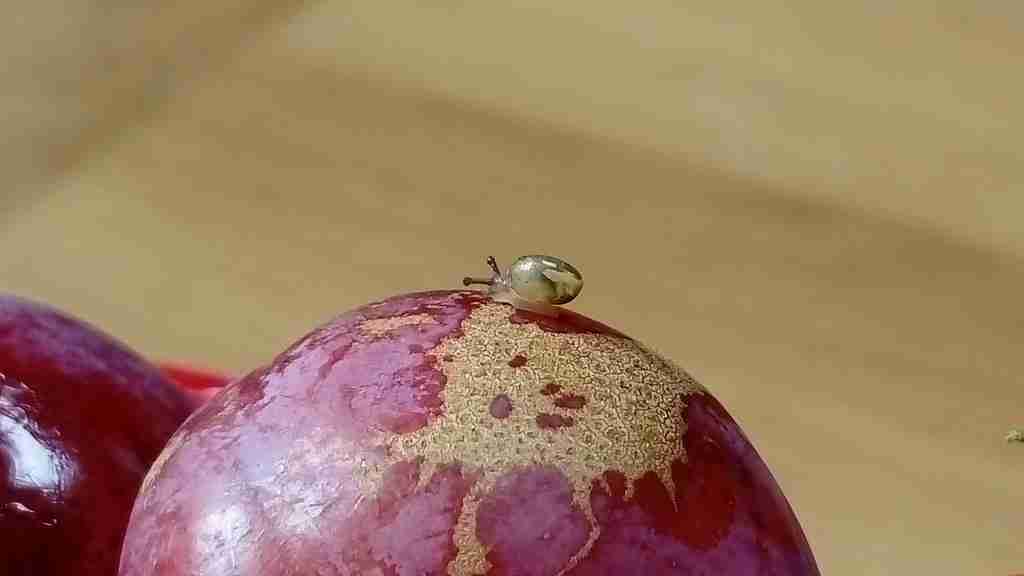
The world’s smallest Snail, Acmella nana, found in Borneo, measures just under 0.03 inches, fitting the category of ‘micro mollusk.’ Another tiny species, Angustopila psammion, discovered in Vietnam, has a shell merely 0.48 millimeters high.
These minuscule Snails, known as ‘microgastropods’ or ‘microsnails,’ are under 0.2 inches tall, yet represent a significant portion of land snail diversity.
FAQs
Snails, being herbivores, primarily feed on vegetation. They don’t bite in the usual sense as they lack jaws. Instead, they scrape and rasp food using a toothed tongue. A few species have a venomous tooth, but this is rare.
Most snail species are hermaphrodites, having both male and female reproductive systems. When two snails meet, they can both lay eggs after exchanging gametes. The eggs are laid in clear, gelatinous clutches, often quite large.
Mystery Snails are distinctive for their large, colorful shells and iridescent bodies. Known for suddenly appearing offspring, hence the ‘mystery,’ they live around four years and are scavengers, thriving in vegetation-rich environments.
Garden snails are generally not poisonous and safe to handle, though care is needed. They can carry lungworm larvae, especially if eaten raw or through contaminated vegetables. It’s advised to wash hands after handling them.
Snails eat a variety of foods including leaves, stems, fruits like apples and grapes, and vegetables like lettuce and cucumber. Young terrestrial snails are particularly active feeders. Aquatic snails also consume plant life.

